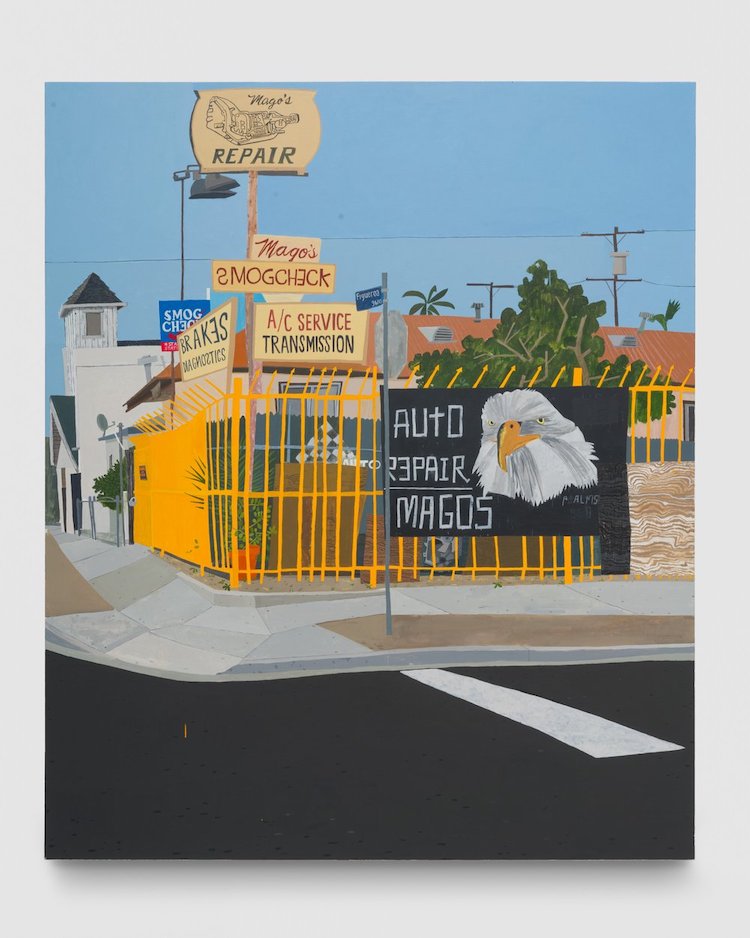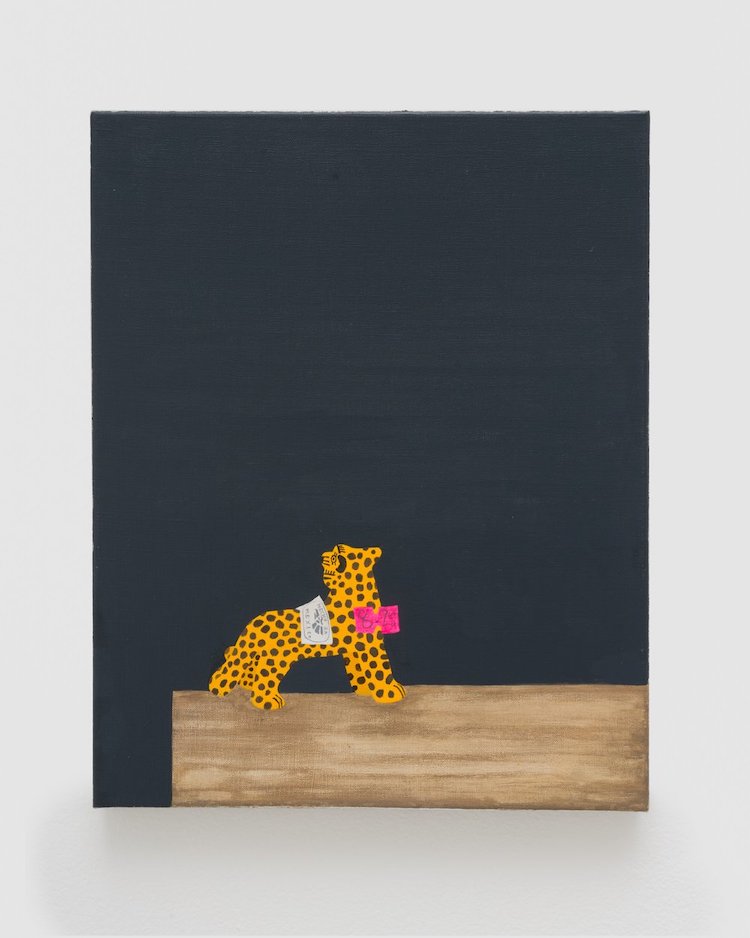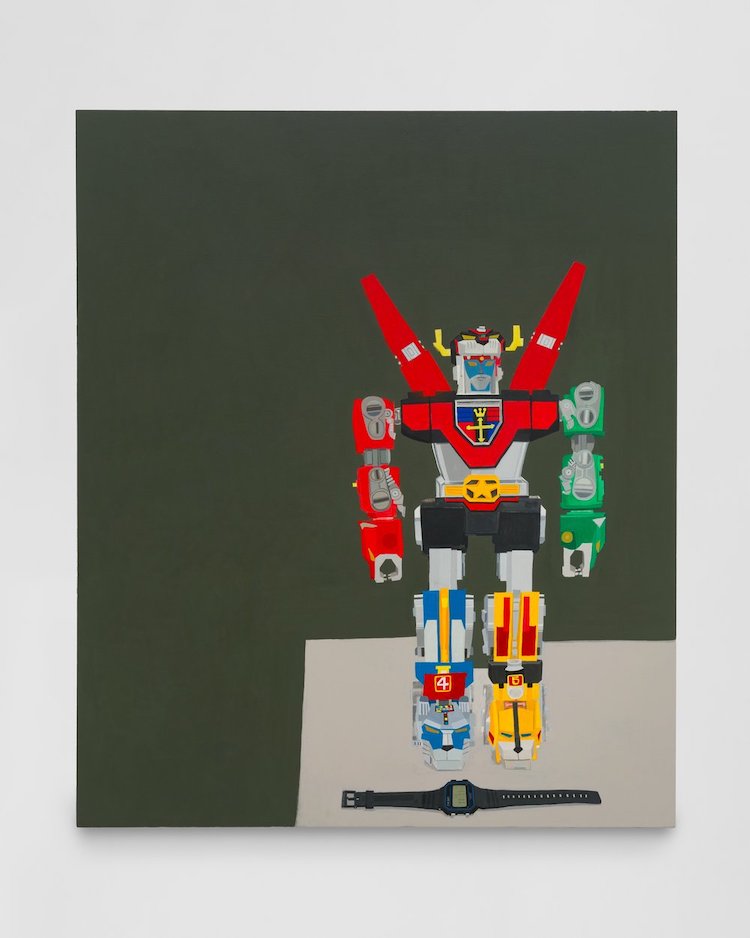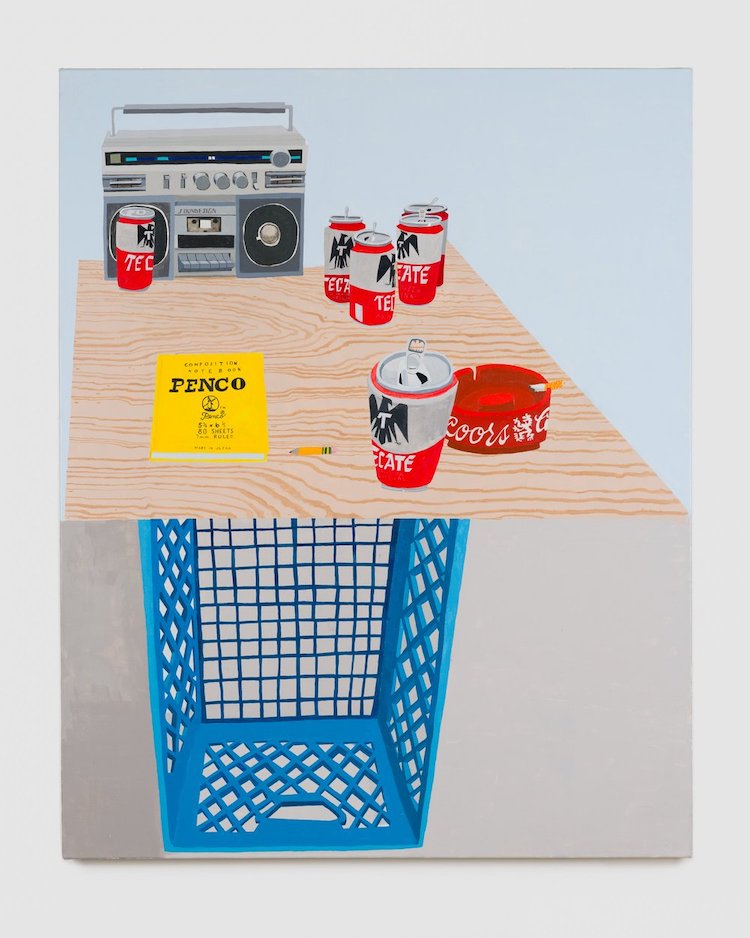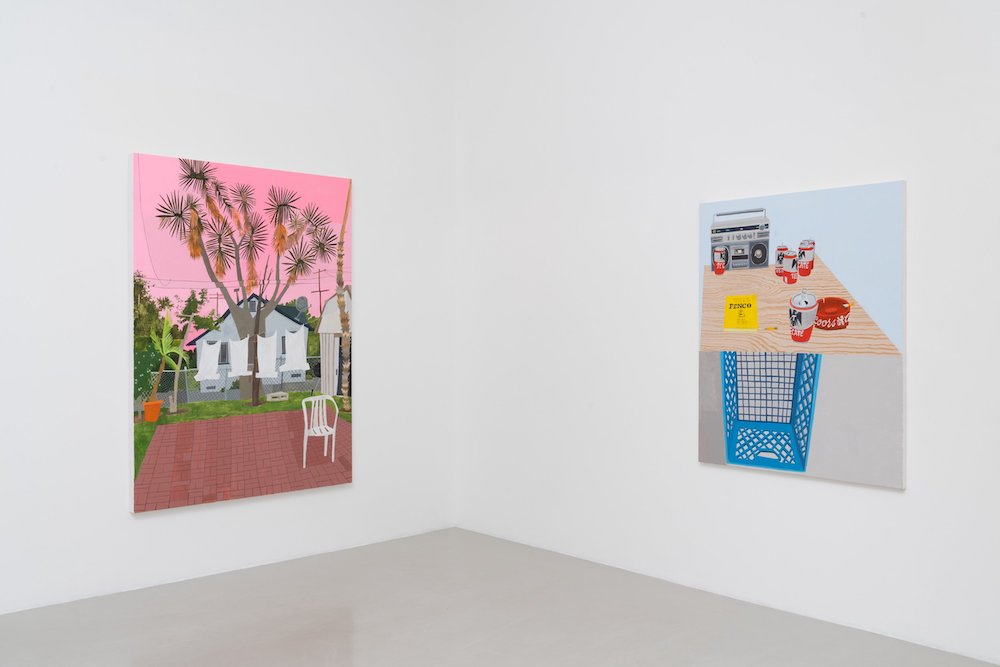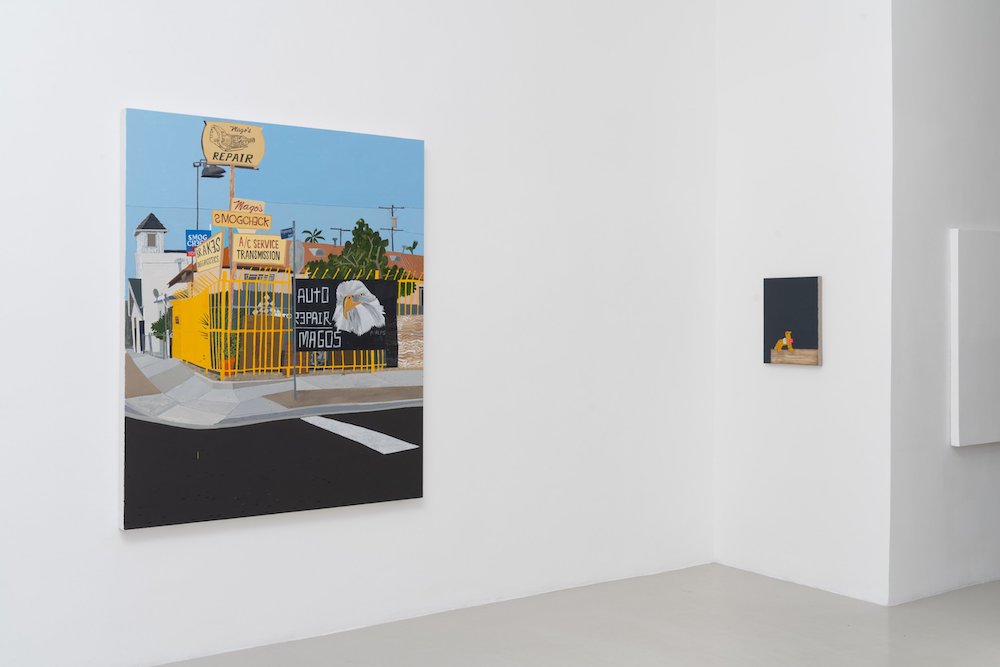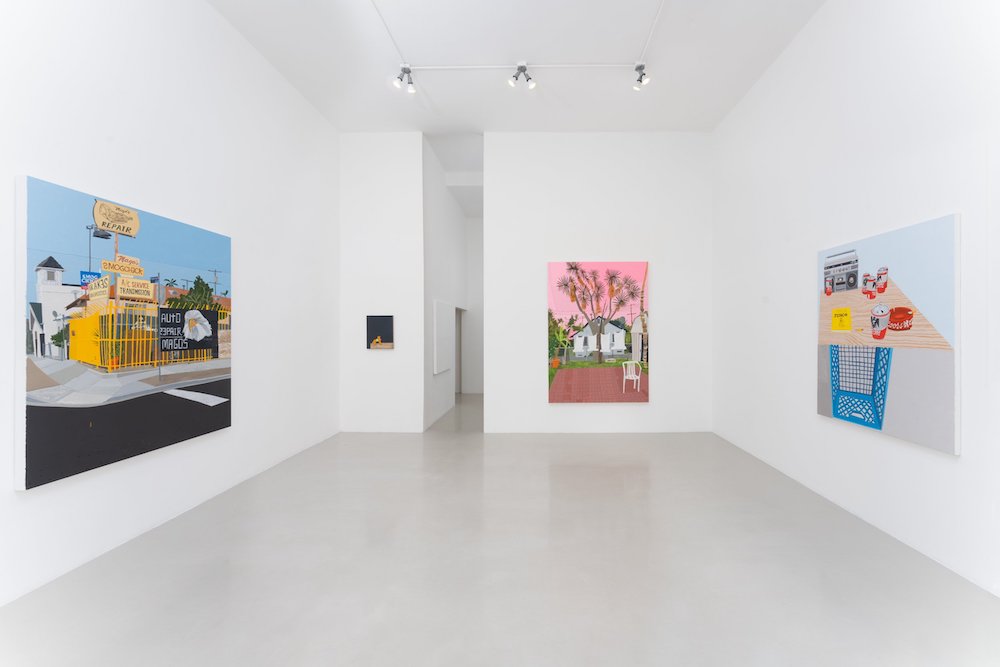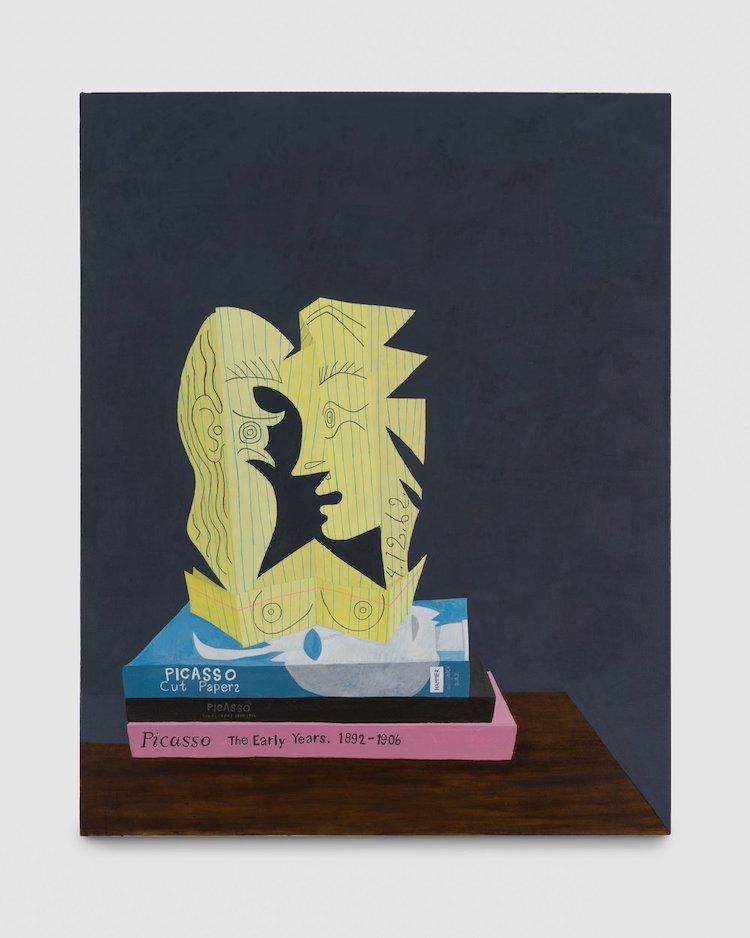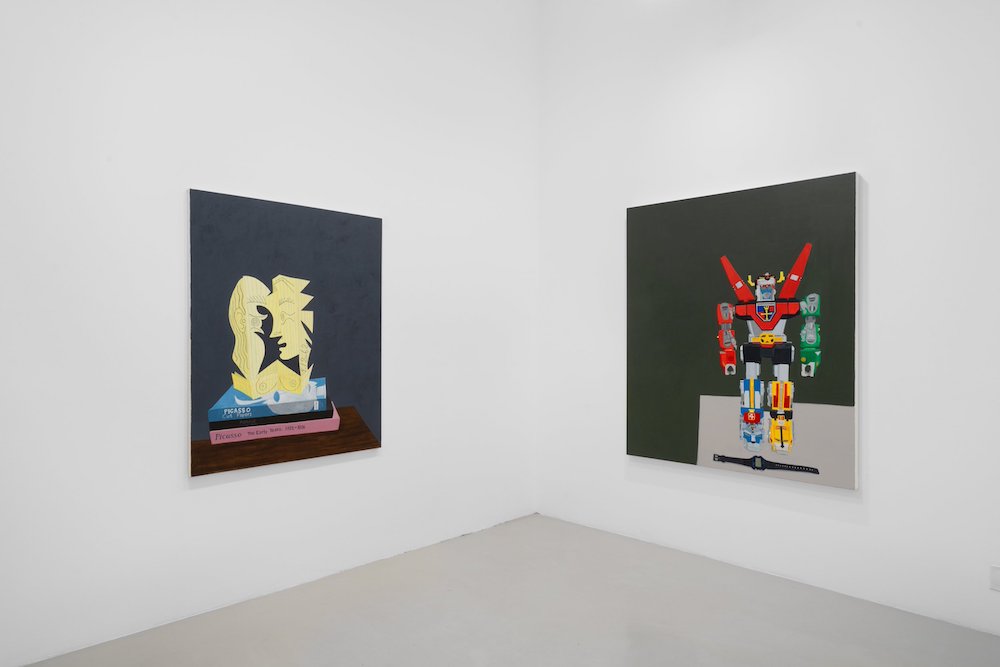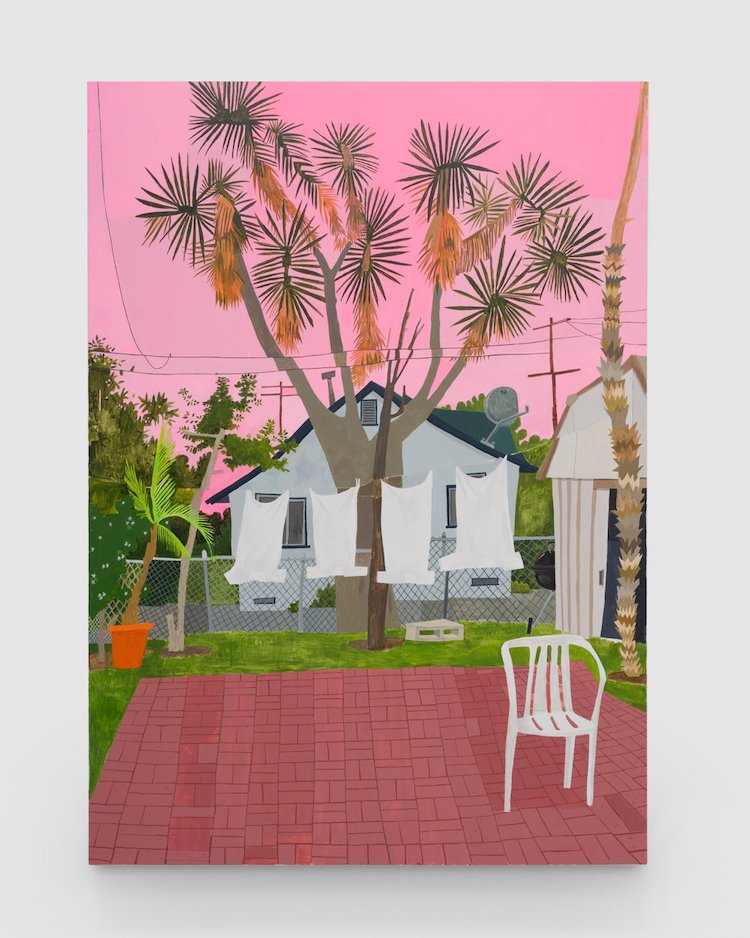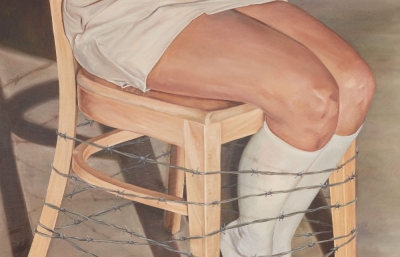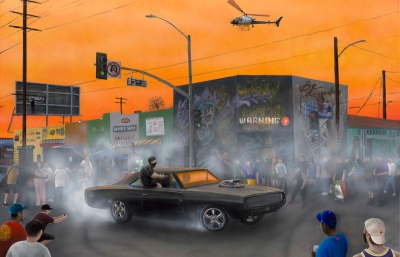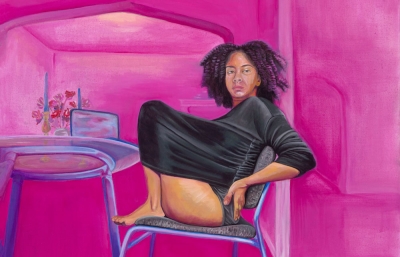Charlie James Gallery is pleased to present Stepping into the Light, Los Angeles-based artist Manuel López’s second solo exhibition with the gallery, on view through November 4, 2023. In Stepping into the Light, Manuel López captures the vitality and beauty of the everyday, bringing together urban landscapes and intimate narratives in precisely rendered, idiomatic compositions that speak to the current moment. The paintings call upon personal and art historical sources as wide-ranging as David Hockney, commercial sign painting, the New York School, and Saturday morning cartoons; resulting in work that synthesizes the vibrating vital energy of López’s native Los Angeles into his own aesthetic vernacular. These are his largest canvases to date and this new scale allows for freer, more painterly expression that seems to grow organically from the tightly controlled finish of his previous work. If the focused gaze of the near past was necessitated by the strictures of pandemic life, these new works embody a newfound freedom of movement and embrace of community.
López’s paintings retain the proportions of the simple sheets of paper where the ideas originate. His compositions begin on paper, always drawn from life, and the artist compares these studies to pages from a coloring book or childhood sketches made on lined pads of paper. He plays with variations on a theme until the composition feels right, at which point the drawing is scaled up through successive preparatory stages: first, a color study at medium scale, then a full-scale drawing that is translated directly onto the canvas. Though the work of painting is slow, López strives to retain the immediacy of drawing alongside a growing interest in the quality and effect of paint as a material.
This new body of work relishes painting qua painting to a greater degree than ever before. López allows his mark-making to remain visible as he experiments with texture and layering, creating rich, velvety surfaces in some passages while letting the support show through in others. Rasquache Picasso in particular plays with both ends of this spectrum: the stacked books and cut-paper sculpture are richly painted in a manner that captures the soft book covers and the crisp lightness of paper, while the table and background are applied thinly, with glimpses of the canvas support coming through the deep black. The energy of the composition swirls around the central paper figures before concentrating in the eye of the figure at right, whose gaze shoots the viewer back across the canvas.
An encounter with Picasso introduced teenaged López to the possibilities and power of an abstracted view of the world. In Rasquache Picasso López recreates a Picasso sculpture in the same lined yellow paper that held his earliest doodles, an act of respect for the father of Cubism that also brings the two artists into direct conversation. The weight of the central still life is balanced by a thinly-painted background, alive with brushstrokes and glimpses of bare canvas. By incorporating the support as part of the composition, López invokes New York School painters such as Clyfford Still, as well as the idea of the wall in the tradition of Mexican muralism that undergirds much of 20th century modernism. López unites these three art historical moments in the spirit of rasquache – using what serves to his own artistic ends.
Time and Technology functions almost as a companion piece to Rasquache Picasso, trading the latter’s painterly black for rich velvet and its re-created modern sculpture for the bright colors and hard edges of a Voltron figurine. Both paintings play with the psychological weight of empty space balanced against the idea of the hero figure. Voltron as a subject speaks to the artist’s interest in popular culture and the visual language he was raised on, rendered here in precise painterly detail.
López builds worlds with often idiosyncratic linework and perspective, finding harmony in imperfection. South Central LA corner (El Mago on Figueroa and 97th) bristles with the energy of a Los Angeles streetcorner by capturing a palimpsest of colors and textures that is unique yet ubiquitous. López describes finding such corners as similar to having a crush – they linger in his mind, persistently pulling on his thoughts. The finished composition brims with life as each small passage stands up to the whole, able to function as its own abstract composition. The work retains small flaws, such as the bright yellow drip on the black street, that draw attention to the labor of painting. These felicitous mistakes never allow the viewer to forget the hand of the artist.
Like South Central LA corner (El Mago on Figueroa and 97th), which places the viewer directly onto the rich blacktop, My Father’s White Shirts bodily invites observers into the space of its wide brick patio – there is even an open chair at the ready. The familiar view of the artist’s childhood backyard has been flattened towards the picture plane; only the small cinder block retains traditional perspective. Here López captures the quieter side of city life: laundry on a line, the wonky limbs of many trees, and a summer sunset refracted through stretched power lines. López also plays with perspective in Sunday Afternoon 2:37 PM, rendering the upturned milk crate, tabletop, and scattered beer cans all from different angles. The collective effect creates an obstacle course for the eyes that keeps the viewer constantly on their toes.



